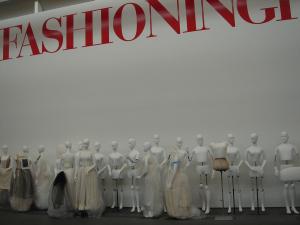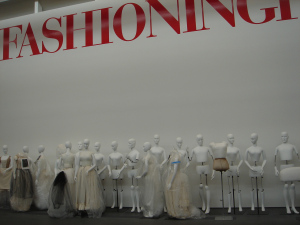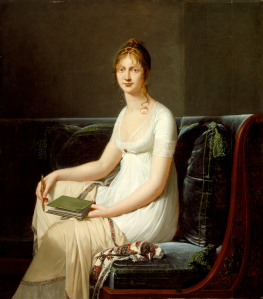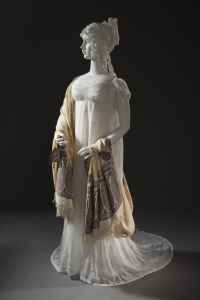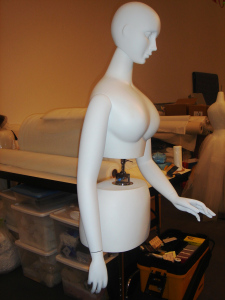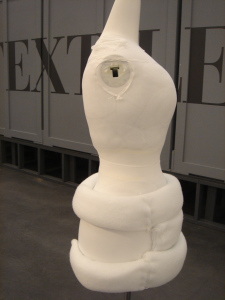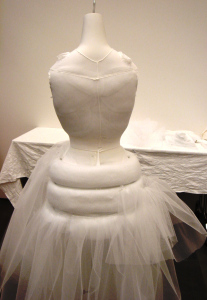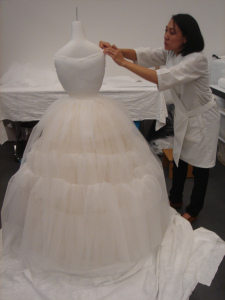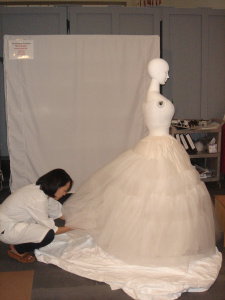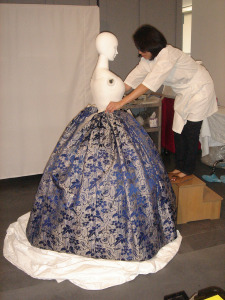In the years, months, and days that led up to the opening of Fashioning Fashion: European Dress in Detail, 1700–1915, there was a steady increase of activity in the Costume and Textiles Department as we prepared nearly 100 historic garments for exhibition. The process of dressing historic garments on mannequins is exacting and time-consuming. Not only must the final presentation accurately portray the fashionable silhouette of the period, the art object must be safely supported for the duration of the exhibition. In doing so, the costume cannot be altered to fit the mannequin; rather it is the mannequin which is padded out to the shape of the garment.
A row of mannequins queue up to be dressed for the exhibition:
This detailed process begins with the curatorial team researching the date of each piece. Next, the fashionable silhouette for that era is determined and an appropriate mannequin assigned. I say “appropriate mannequin” because we have male and female mannequins that were built to represent each dramatic change in the fashionable silhouette from the eighteenth through early twentieth centuries. For women, corsets, crinolines, and bustles dictated not only idealized waist-to-hip ratios, but also posture and whether “fat” was pushed up, down, in, or out. Period paintings, fashion plates, and photographs were also examined and continually referenced throughout the dressing process.
An example of how period paintings helped us create historically accurate mannequin ensembles:
Before the initial “fitting,” a series of measurements were taken from the garment to determine the positioning of the torso, hips, and legs of the mannequin. The dresser then cuts out concentric shapes of batting to slowly build out the mannequin to the shape of the garment. Control-top pantyhose were placed on both the torso and lower portion of the mannequin to hold the pieces of batting in place while providing a smooth safe surface for the object to rest upon. If necessary, prop undergarments were made to complete the silhouette. This part of prepping the mannequin can take several days.
A female Victorian mannequin is selected to be dressed:
A side view of the mannequin with its torso covered and padded to the shape of a Victorian dress bodice, with rolls of batting sewn around the hips to create support for the beginnings of a crinoline-shaped understructure:
Finally, the costume was carefully placed on its specially prepared mannequin and, after a few minor adjustments, one can step back to enjoy the gratifying moment when the historic garment comes to life.
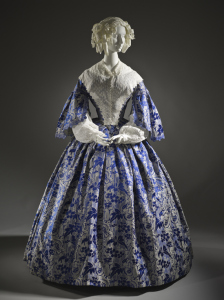
Period accessories and a paper wig finish the look of a mannequin, now ready for display.



